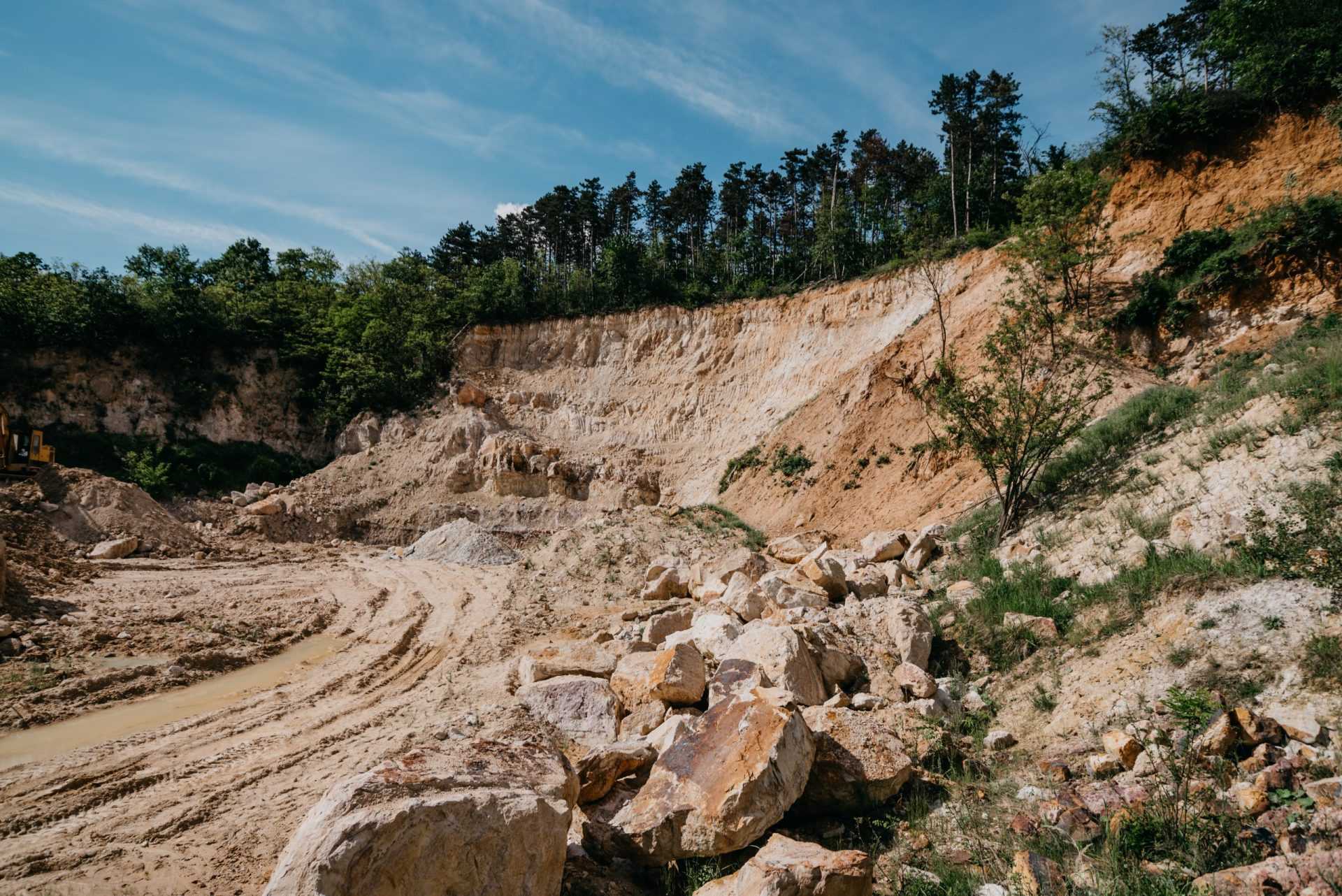
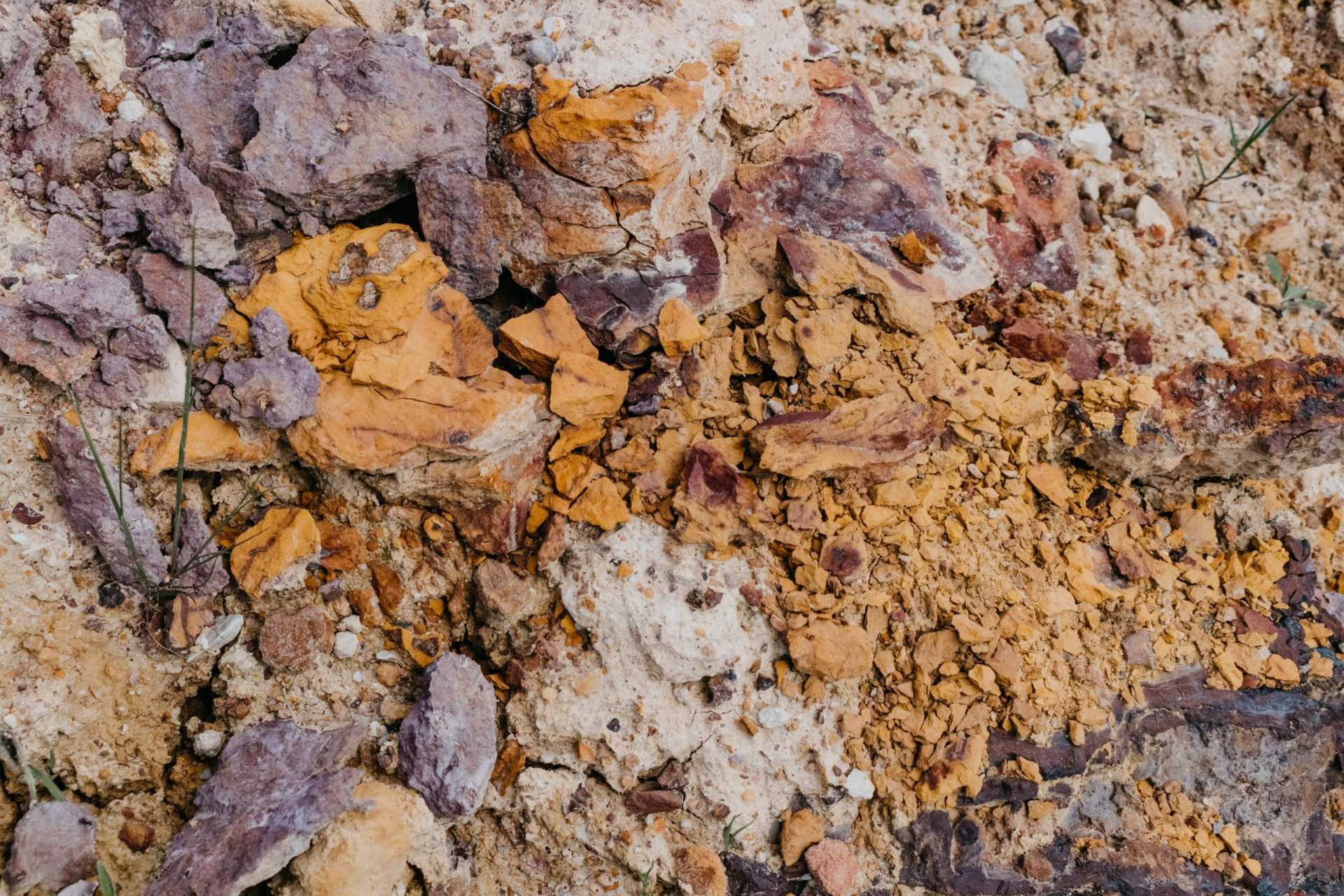
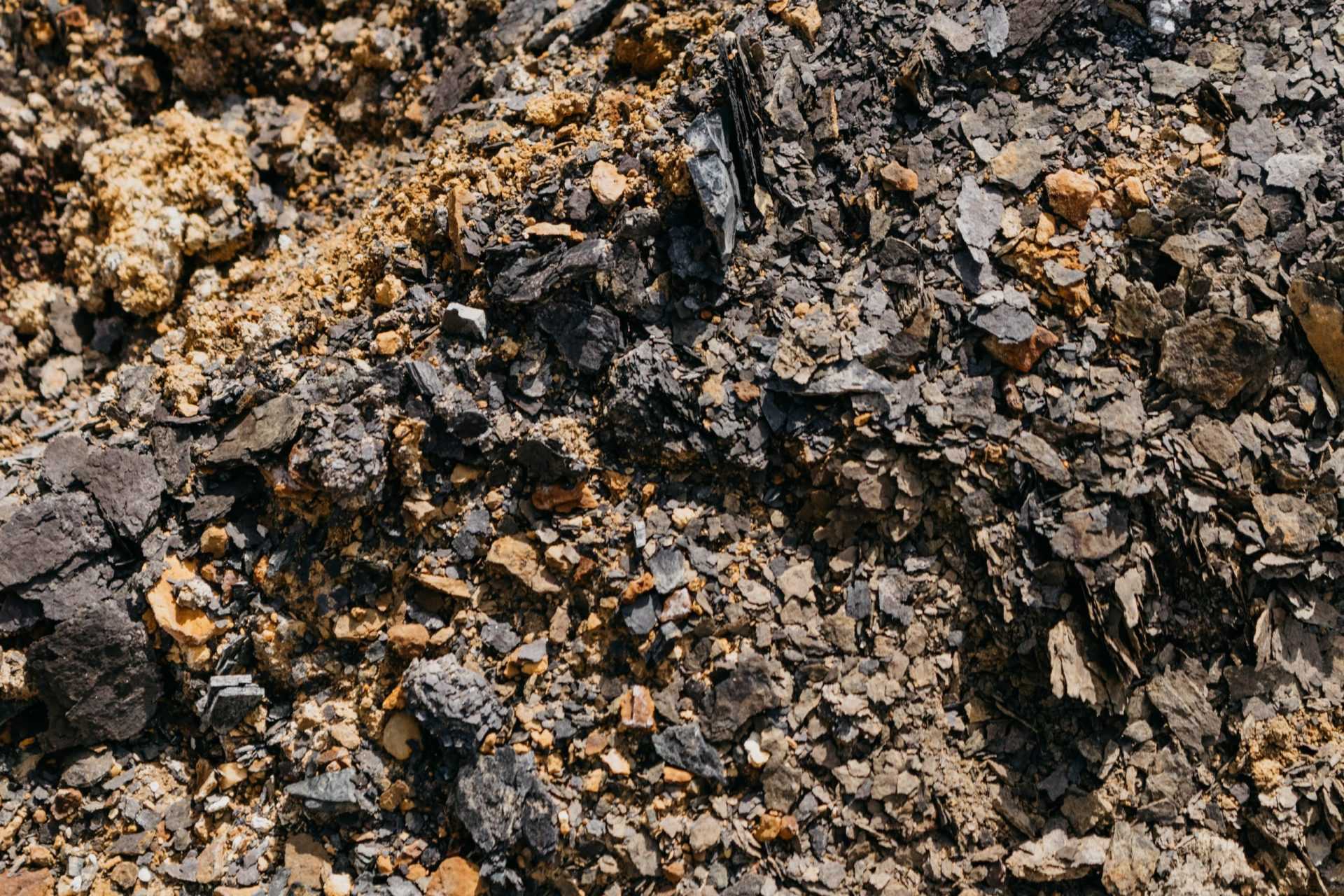
Clay minerals are soft, porous, freely bound earthy materials. They can be classified based on their unique mineral content and crystal structure. There are four main clay mineral groups: Smectite or Montmorillonite, Kaolinite, Illite and Chlorite.
Clay minerals are the major constituents of fine-grained sedimentary rocks found in mineral deposits near the surface of the Earth.
There are around 30 different types of “pure” clays such as kaolinite, illite and bentonite within Clay Mineral Groups.
Clays are usually a mixture of a variety of minerals (e.g.: kaolinite, bentonite, illite or rhyolite) with one or two minerals being predominant as well as other various ingredients (e.g.: feldspar, quartz).
While colour is often used to identify and differentiate clays, it is not completely accurate. Clay minerals are classified by their unique mineral content and crystal structure. Most of the clay minerals (kaolinite, bentonite, illite) come in a variety of natural colours.
Colours reflect the variety of unique minerals, chemical elements and organic materials contained within the clay. Depending on metal content, oxidation process and other impurities such as plants, they may be white, greyish, greenish, yellowish, reddish or brown.
Clay is a widely distributed, abundant mineral resource of major industrial importance for an enormous variety of uses. In both value and amount of annual production, it is one of the leading minerals worldwide.
Clay is most commonly used in the paper, ceramic, paint, rubber, chemical, pharmaceutical and cosmetic industry. For example, more than 10 million tons of clay is processed annually for paper production. (U.S. Geological Survey)
As a natural cosmetic ingredient, it has become popular mainly due to its exfoliating effect and high level of absorbency power. When processed appropriately, clay minerals keep their cleansing effect, drawing out impurities from the skin like a magnet, while providing minerals to the skin.
All clay minerals are composed of a certain set of minerals, however their proportion can vary based on location and processing method.
• Silica;
• Alumina;
• Iron oxide;
• Titanium dioxide;
• Calcium;
• Potassium;
• Magnesium;
• Zinc;
• Nitrogen salts.
• Mattifying
• Cleansing
• Refining skin texture
• Mineral composition, soluble mineral content
• Cation exchange capacity
• Molecular structure: adsorption ability, specific surface area
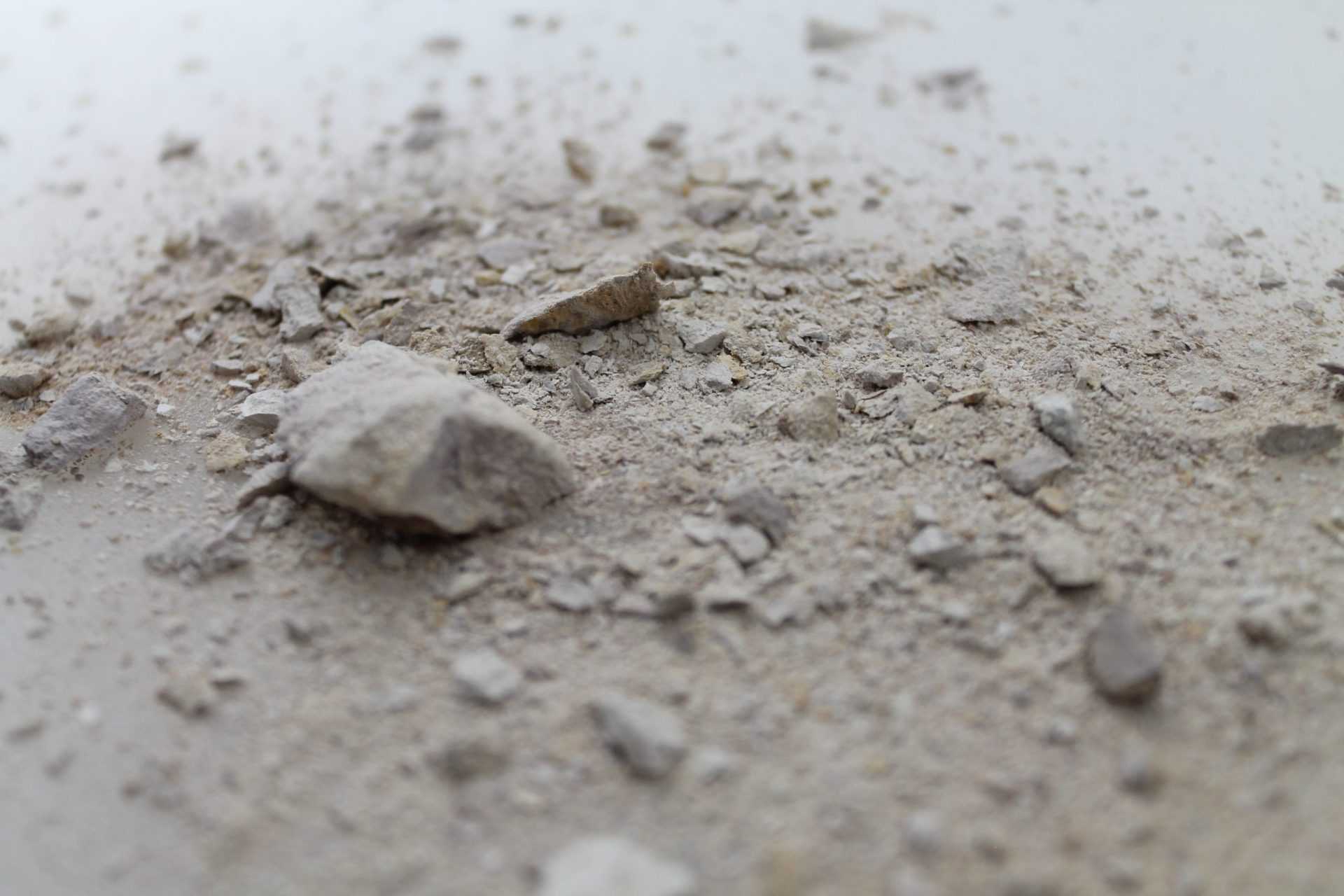
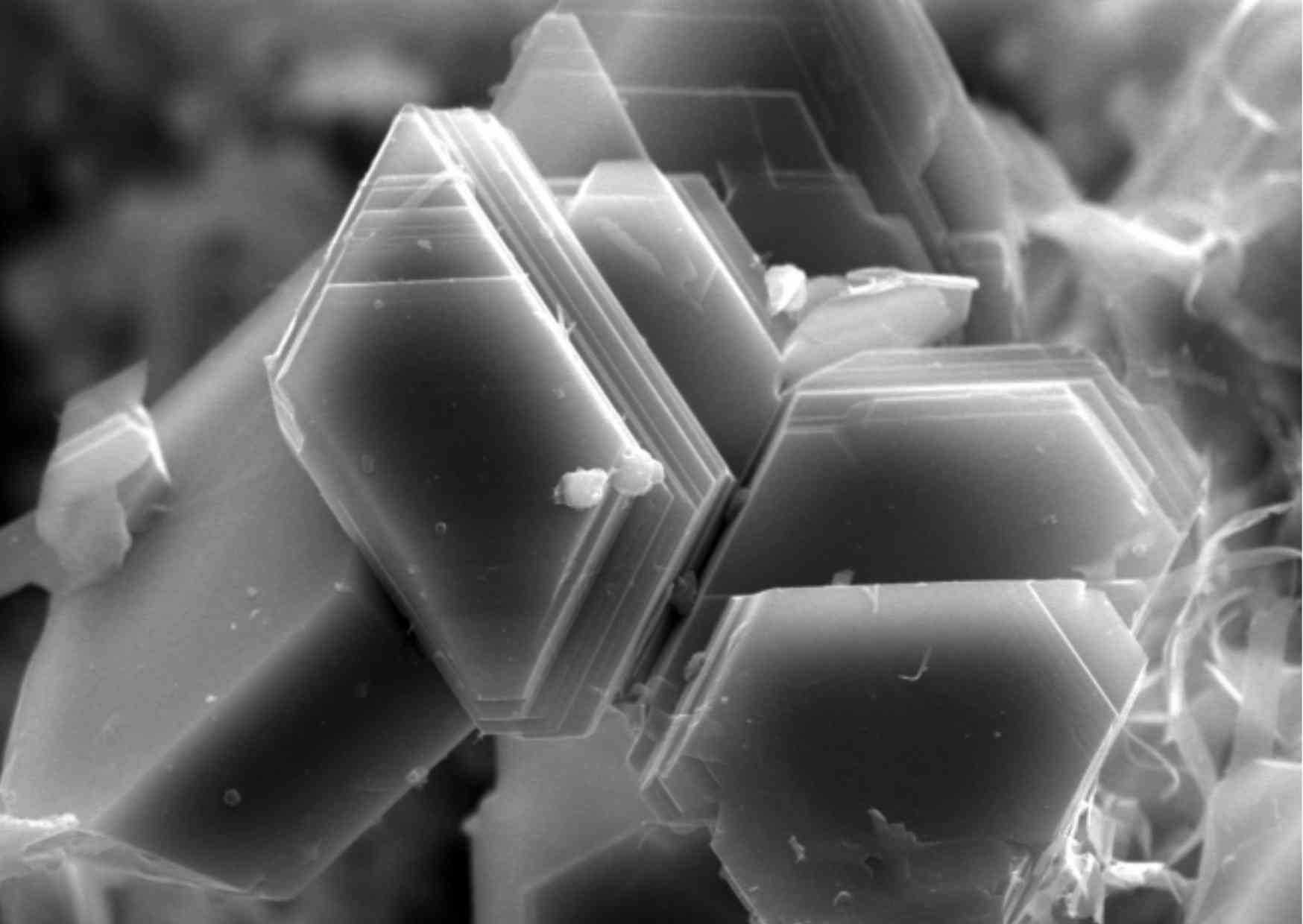
Recommended for normal, dry and sensitive skin. Kaolin is characterised by mild cleansing power and water absorbency level.
Its main component is kaolinite; in addition, it frequently contains quartz, mica, feldspar, illite, and montmorillonite.
Kaolin, also known as white clay, is rich in minerals with a significantly high level of silica and alumina content.
In its natural state kaolin is off-white, however, higher iron content or other mineral contamination can result in light yellowish or brownish reddish colours.
The cation exchange capacity of kaolin is lower in comparison to other clay minerals: 3 – 15 Meq/100g. Cation exchange capacity describes a clay’s ability to hold and exchange cations (i.e minerals and salts).
Its plate-like crystal structure is capable of gently adsorbing small molecular substances. As a result, kaolin has a purifying power similar to a magnet, removing impurities such as heavy metals, bacteria, viruses and excess oils from the skin.
Kaolinite has lower surface areas and cation exchange capacity than other clay materials. Due to its fine-grained particles, it acts as a mechanical peeler removing dead skin cells and impurities. It can also be applied to normal and dry skin. Due to its lower water absorption capacity it does not dry your skin out. Thanks to its high mineral content kaolin can have a soothing effect on irritated skin.
Recommended for normal and combination skin types. Illite is characterised by medium cleansing power and water absorbency level.
Illite clay minerals were formed by the decomposition of rocks rich in Potassium and Aluminium. Illite is the main component of slate and ancient sedimentary rocks (“mudrocks”).
Their colour usually varies between greyish white, silvery white and greenish grey.
The cation exchange capacity of illite is lower in comparison to other clay minerals 10-40 Meq/100 g. Cation exchange capacity describes a clay’s ability to hold and exchange cations (i.e minerals and salts).
Its unique lamellar crystal structure is capable of gently adsorbing small molecular substances. As a result, illite has a purifying power similar to a magnet, removing impurities such as heavy metals, bacteria, viruses and excess oils from the skin.
The specific surface area of its molecules is medium, hence illite has a moderate water absorption capacity. Recommended for normal and combination skin.
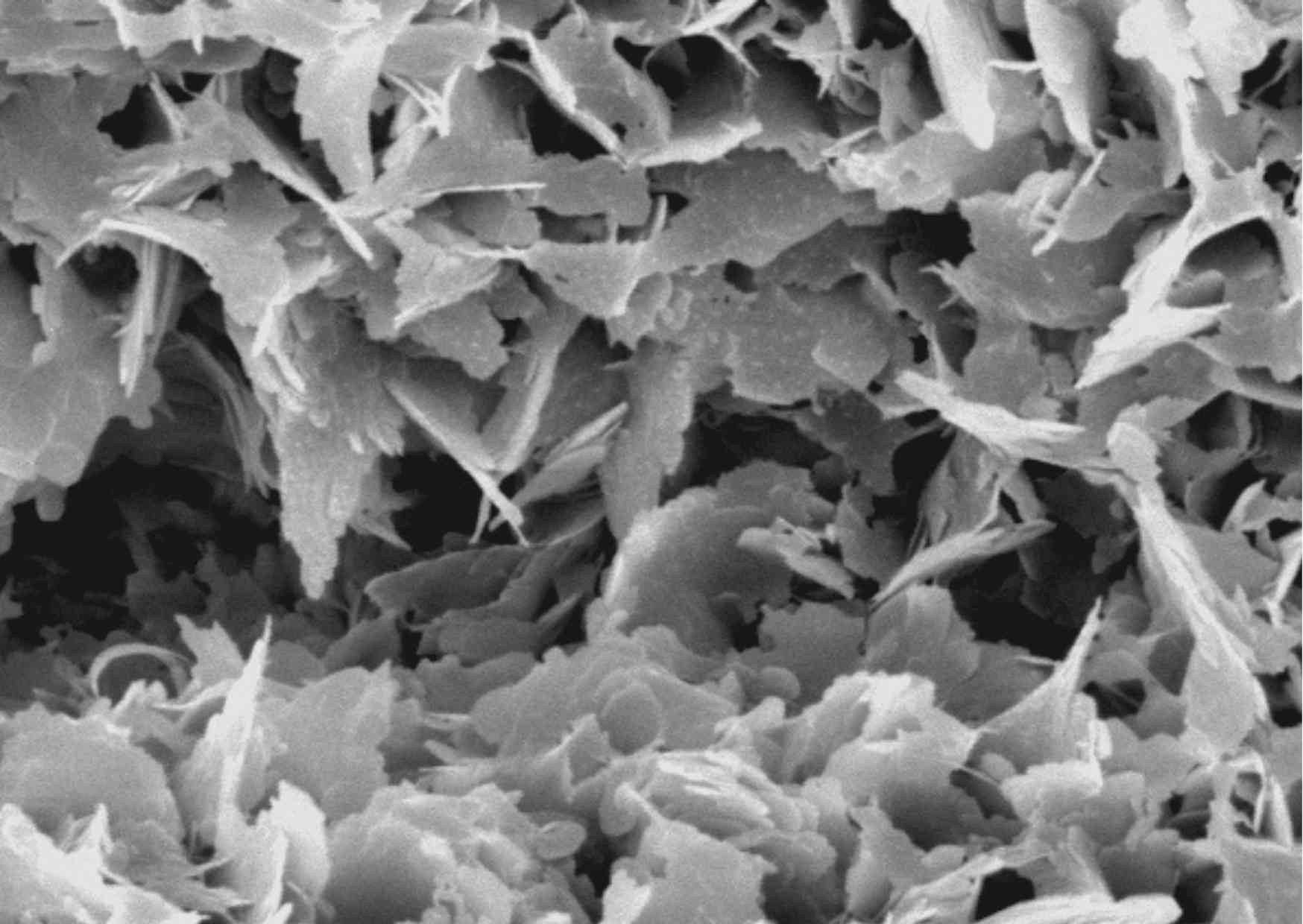

Recommended for combination and oily skin. The smectite group of clay minerals is characterised by strong cleansing power and water absorption capacity.
It is formed by aqueous weathering of volcanic ash in marine environments. Often contains small amounts of plagioclase, kaolinite, clinoptilolite, quartz, and biotite.
Montmorillonite most commonly occurs in bentonite. Montmorillonite is its main mineral compound. Bentonite can be divided into two main groups based on its predominant mineral content. One is dominated by calcium, the other is by sodium.
Bentonite and Fuller’s Earth are part of the Montmorillonite or Smectite group. Their main mineral compound is the montmorillonite clay mineral.
Montmorillonite has a high cation exchange capacity, 80-120 Meq/100 g, being able to bind many times its own volume. Cation exchange capacity describes a clay’s ability to hold and exchange cations (i.e minerals and salts).
Montmorillonite clays have a unique crystal molecular structure. The structure, chemical composition, exchangeable ions are responsible for their several unique properties such as high cation exchange capacity, high surface area and high adsorption capacity, which make montmorillonite suitable for oily skin as well. Montmorillonite has a stronger purifying power, removes impurities such as heavy metals, bacteria, viruses, dead skin cells and excess oils from the skin.
Montmorillonite acts as an intense cleanser. It effectively adsorbs excess sebum and dirt. Due to its tightening properties montmorillonite clays also help to reduce the visibility of large pores. Due to its high mineral content, it can have a soothing effect on irritated skin.
Recommended for normal and combination skin. Chlorite is characterised by its moderate cleansing power and water absorbent capacity.
Chlorites characteristically occur as alteration products of other minerals. They are common rock-forming minerals in clastic sediments and in hydrothermally altered igneous rocks.
Chlorite is a widespread group of layer silicate minerals occurring in both macroscopic and clay-grade sizes. They are hydrous aluminium silicates, usually of magnesium and iron.
The cation exchange capacity of chlorite is lower in comparison to other clay minerals: 10 – 40 Meq/100g. Cation exchange capacity describes a clay’s ability to hold and exchange cations (i.e minerals and salts).
Its unique corn flake-like crystal structure is capable of gently adsorbing small molecular substances. As a result, chlorite has a purifying power similar to a magnet, removing impurities such as heavy metals, bacteria, viruses and excess oils from the skin.
The specific surface area of chlorite molecules is considered to be medium, hence its cleansing power and water absorbing capacity is moderate. Recommended for normal and combination skin.
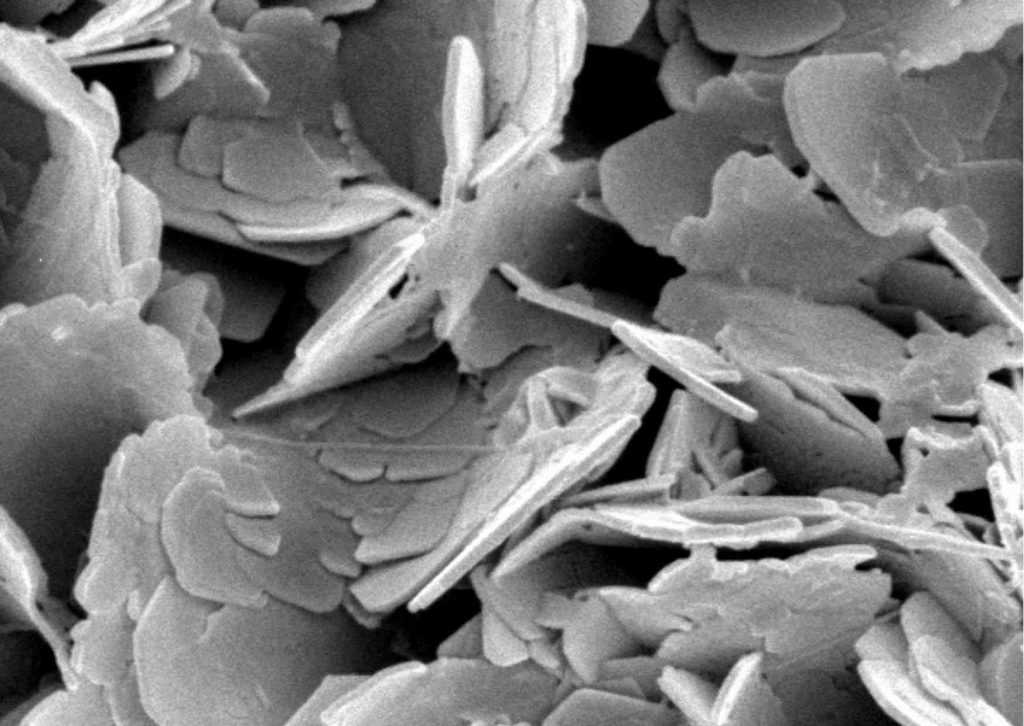
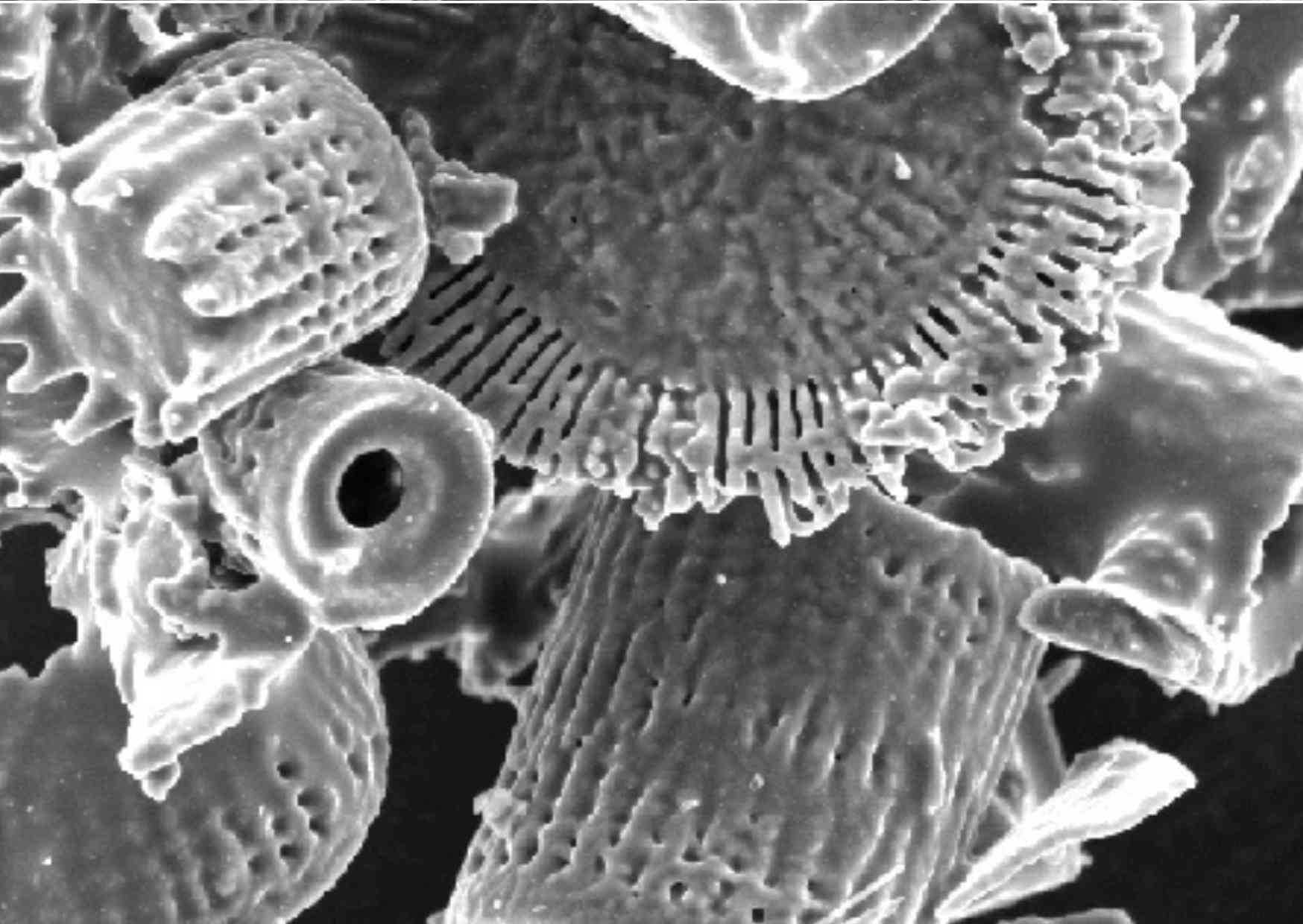
Recommended for dry and sensitive skin. Diatomaceous Earth is characterised by gentle cleansing power, gentle water absorbing capacity and high mineral content.
Diatomaceous earth or kieselgur is a naturally occurring, soft, siliceous sedimentary rock, formed by the accumulation of the amorphous silica, remains of dead diatoms (fossilised remains of tiny, aquatic organisms) in lacustrine or marine sediments.
Diatomaceous earth is made from the fossilised remains of tiny, aquatic organisms called diatoms. Their skeletons are made of a natural substance called silica. Over a long period of time, diatoms accumulated in the sediment of rivers, streams, lakes, and oceans.
Silica is a natural, chemical compound consisting of oxygen and silicon molecules. Silica occurs naturally in the human body and in plants as well, and makes up more than a quarter of the earth’s crust.
Diatomaceous earth is not only high in silica, but also in calcium and magnesium.
The most common colour of diatomaceous earth is light beige.
The cation exchange capacity of Diatomaceous earth is medium in comparison to other clay minerals: 20 – 27Meq/100g. Cation exchange capacity describes a clay’s ability to hold and exchange cations (i.e minerals and salts).
Diatomaceous earth is an organic, microcrystalline mineral, made from the fossilised remains of tiny, aquatic organisms called diatoms. Under microscope their skeletons look like porous pipes in various shapes.
Its unique crystal structure is capable of gently adsorbing small molecular substances. As a result, diatomaceous earth has a purifying power similar to a magnet, removing impurities such as heavy metals, bacteria, viruses and excess oils from the skin.
Diatomaceous earth molecules have a very low specific surface area and cation exchange capacity compared to other clay materials. Due to its fine-grained particles, it acts as a mechanical peeler removing dead skin cells and impurities. It can also be applied to normal and dry skin. Due to its lower water absorption capacity, it does not dry your skin out. Thanks to its high mineral content (magnesium, calcium) diatomaceous earth revitalises your skin.
Clay, as a raw material, first appeared in northeastern China, where the history of clay mining dates back to the third century. Kaolin as a name is originated from the Chinese word “Kao-Ling” meaning “High Mountain”, which is a hill near Jau-chau Fu, China, where kaolin was first mined.
The mining of white clay in China has been excessive in recent centuries, as there is a long tradition of making porcelain in the area. Although large-scale mining began in China, much of the really high-quality kaolin is not extracted from there. Kaolin deposits are present in most countries, however it is very rare to find the right quality and quantity for extraction and processing.
Kaolin deposits are present all over the world, however it is very rare to find the right quality and quantity for extraction and processing.
White clay mining is biggest in the United States, accounting for 40% of the world’s total kaolin mining.
Europe, Germany, the UK, the Czech Republic and France are the largest miners and exporters of kaolin. There are several smaller kaolin deposits in Central-Eastern Europe, some of them are located in Hungary as well.
Currently, there is one mine in operation in the northern part of Hungary (Felsőpetény), where white clay (kaolin) is being extracted. Deep-field mining in the area began in the 1920s, mainly for the extraction of gray clay. White clay mining began in the 1960s, when it was used mainly in the ceramic industry due to its refractory properties. Currently only high-quality kaolin is being extracted in Felsőpetény.
The kaolin deposit of Maskaolin products is located in the northern part of Hungary (Felsőpetény), where currently only high-quality kaolin is being extracted. The cosmetic raw material – used in Maskaolin products – is mined from the upper layers of earth, which have remained intact during previous mining activities.
White kaolin clay in Felsőpetény was formed around 150 million years ago during the Triassic geologic period. It is sediment of the former Thetis Ocean, thus has an extremely high mineral content. The clay deposits are not contaminated – their iron-containing mineral and organic material content is neglectable – so their whiteness is natural. Due to the chemical and physical properties of Maskaolin, it is suitable for the cosmetic industry.
© 2024 Maskaolin.hu All Rights Reserved